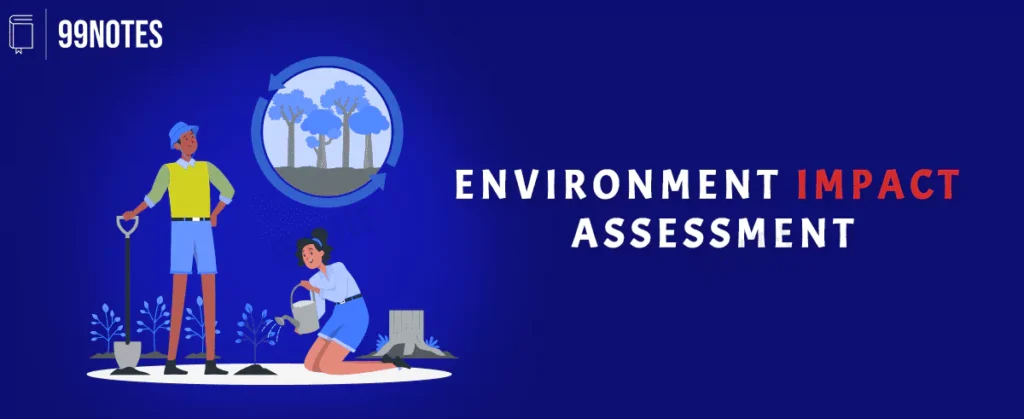
Environment Impact Assessment Free UPSC Notes Download
More About Environment Impact Assessment
Environmental Impact Assessment (EIA) is a process of identifying, predicting, evaluating and mitigating the potential negative impacts of a proposed project or development on the environment.
It is an important tool for decision-making and helps to ensure that the potential impacts of a project on the environment are properly understood and taken into account before a decision is made to go ahead with the project.
EIA is a continuous process that begins at the planning stage of a project and continues throughout the entire life cycle of the project.
It involves the collection and analysis of data on the physical, chemical, and biological aspects of the environment, as well as the social and economic impacts of a proposed project.
The results of the EIA are then used to inform the decision-making process and to identify any necessary measures to mitigate or minimize the potential impacts of the project on the environment.
There are several steps involved in the EIA process, including:
- Scoping: This is the first step in the EIA process and involves identifying the key issues and potential impacts that need to be addressed in the assessment. It also involves determining the level of detail and scope of the assessment, as well as the appropriate level of public consultation.
- Impact prediction and evaluation: This step involves predicting and evaluating the potential impacts of the proposed project on the environment, including the physical, chemical, and biological aspects of the environment, as well as the social and economic impacts.
- Mitigation and enhancement measures: If the EIA identifies significant potential impacts, the project proponent must consider measures to mitigate or minimize these impacts. This may involve changing the design of the project or implementing specific mitigation measures.
- Consultation and public participation: EIA involves consultation with a range of stakeholders, including the public, government agencies, and interested groups. This is an important part of the process, as it allows for the sharing of information and the incorporation of different viewpoints into the decision-making process.
- Review and decision-making: The results of the EIA are reviewed by the relevant decision-making body, which may be a government agency or a private company. The decision-making body will consider the results of the EIA, as well as any other relevant information, before deciding whether to approve the project.
EIA is an important tool for ensuring that the potential impacts of a project on the environment are properly understood and taken into account before a decision is made to go ahead with the project. It helps to ensure that projects are developed in a sustainable and responsible manner, and helps to protect the environment and the people who depend on it.
